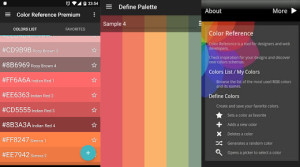Getting Random with David Bowie and Fractals

Key Takeaways
- David Bowie used a unique songwriting process, where he would cut up sentences from newspapers and reassemble them into random sentences. In the 1990s, Bowie worked with a programmer to create a system, the ‘Verbasizer’, which automated this process, generating phrases that often became the seed for bigger ideas and stories.
- Fractals, like Bowie’s random sentence generator, emerge from a meaningless world of numbers, but humans often make their own connections with them. Software like Frax and Chaotica can help generate fractal imagery, which can be used in design for backgrounds, color and shape combinations, and more.
- The concept of randomness, whether in Bowie’s songwriting process or in fractal design, often leads to the creation of ‘accidental sense’—the meaning that humans assign to it. This can be a tool for generating new ideas and breaking away from traditional structures, in music, design, or other creative fields.
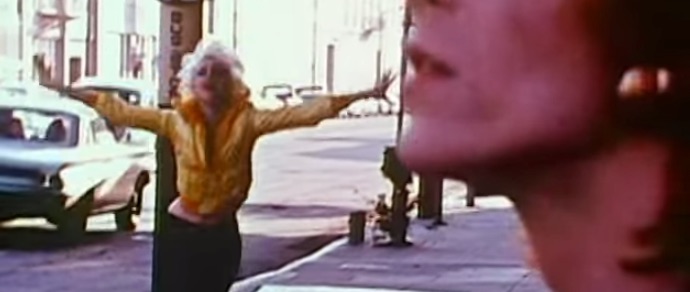
A small Jean Genie snuck off to the city,
Strung out on lasers and slash-back blazers,
Ate all your razors while pulling the waiters
Last week I saw the ‘Bowie Is’ Exhibition at ACMI, and the lyric above from his ‘Jean Genie’ (1973). I have no idea what a ‘slash-back blazer’ is, but, like lots of Bowie’s best lyrics, it’s a fantastic sounding phrase.
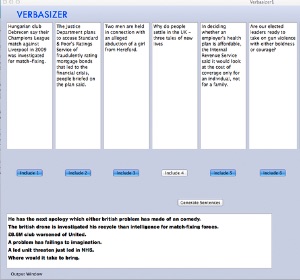
And for all the chunky guitar riffs, martian make-up and gender-bending outfits, my favorite part was probably some footage of Bowie explaining his fantastically nerdy song-writing process.
It works like this: Typically he would take a pile of newspapers, cut the sentences into strips and then reassemble the pieces into brand new random sentences. Later in the 1990’s, Bowie worked with a programmer to create a system (the ‘Verbasizer‘) that automated this newspaper cutting/joining process.
So what you end up with is a real kaleidoscope of meanings and topics and nouns and verbs all sort of slamming into each other. – David Bowie
While most of these generated phrases mean nothing, others becomes the seed for bigger ideas and stories.
And I find that even maybe four words in here would… ‘The top kills himself.’ That sounds like a boss, doesn’t it? And suddenly I get a vision of a boss in the 30s throwing himself out of a window in the Great Depression. That might be enough to set me off writing a song about that. – David Bowie
While this partly ‘gives away the magician’s trick’, it also shows that often the true value of the random isn’t really its ‘randomness’ – it’s the ‘accidental sense’ that WE make of it.
Whether it’s seeing faces in clouds or our future in tea-leaves, humans seem to be hard-wired to search for meaning–even in completely meaningless things. We can’t help it.
Using Randomness in Design
I think that fractals are like a visual equivalent of Bowie’s random sentence masher. Though they emerge from a meaningless world of numbers, we can’t help making our own connections with them. And, like Bowie, software can help us with these too.
Frax
Tom Beddard’s Sub.Blue has been a home to great fractal experiments since the mid-2000s. In 2011 he teamed up with Kai Krause (of Kai’s Power Tools fame) and Be Weiss to create a new kind of graphics app.
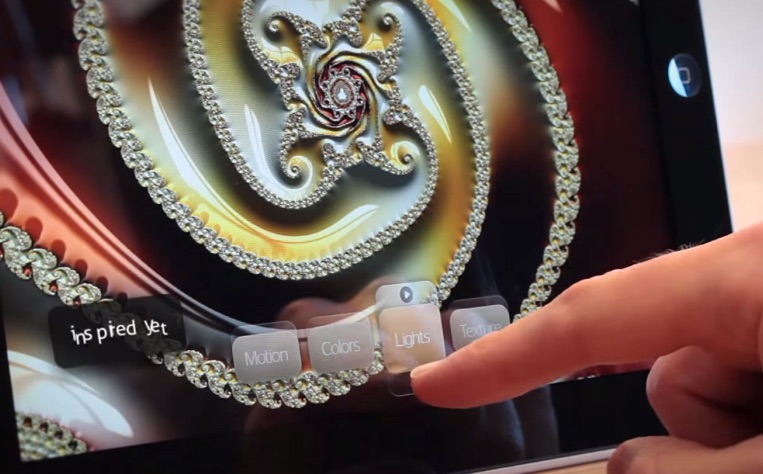
A year ago they released an iPad app called Frax that can generate incredible imagery with very little effort. The Frax interface is very minimal – it’s mostly swipes and pinches – so this is as close as you’ll ever get to ‘fractal fingerpainting’.
If you’ve got an IOS device, this is a fun introduction to fractals.
Chaotica
Chaotica is a fractal generation application available for most OSs. I’m not going to lie – you’ll probably need to read some tutorials to get real value out of this application. While the interface isn’t busy, it probably uses some concepts you may not be familiar with right now.
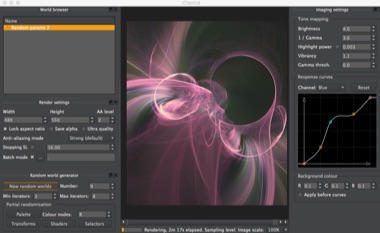
However I think it is worth a small time investment as it’s more versatile than Frax and has a strong, super-enthusiastic community behind it.
Chaotica Studio is $99 and Chaotica HD is $33, but the free version is very capable. The only limitations to the free edition are:
- a 1280 x 960px maximum resolution
- animations capped at 30-seconds
Certainly there’s nothing preventing you from creating great, original work like the piece below.
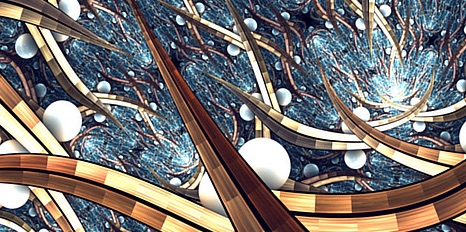
In the current – SuicidebySafetyPin. Made with Chaotica.
Ruts and New Paths
Obviously the next challenge is converting these random creations into viable designs. Backgrounds are an obvious application, but color and shape combinations are just as important. For instance, a logo might riff on those twisting leaf shapes above. Or a new site might simply be built around that blue-gold color palette. Surprise yourself.
Whether you’re a songwriter, a designer or a budding novelist, a blank page can be a cruel taskmaster. ‘Sentence mashups’, fractal tools and other random content generators can be a great way to route around your normal design habits into new ideas.
Maybe the ‘design earth’ has been flat for long enough.
Frequently Asked Questions about David Bowie and Fractals
How did David Bowie use fractals in his music?
David Bowie was known for his innovative approach to music and his use of fractals was no exception. He used a software called the Verbasizer, which he co-created with Ty Roberts. The Verbasizer would take in a variety of inputs, including Bowie’s own writing, and output randomized text. This text would then be arranged into lyrics, creating a unique and unpredictable pattern, much like a fractal. This approach allowed Bowie to break free from traditional songwriting structures and create something truly unique.
What is the Verbasizer and how does it work?
The Verbasizer was a software program co-created by David Bowie and Ty Roberts. It was designed to randomize text inputs and output a unique arrangement of words and phrases. Bowie would input his own writing, along with other sources, and the Verbasizer would create a randomized output. This output would then be arranged into lyrics, creating a unique and unpredictable pattern. The Verbasizer was a key tool in Bowie’s innovative songwriting process.
How can I use fractals in my own music?
Using fractals in music involves creating patterns that are self-similar, meaning they repeat at different scales. This can be achieved through various methods, such as using software like the Verbasizer to randomize and rearrange text into lyrics. Another method is to use fractal generation software to create unique soundscapes. This approach requires a basic understanding of fractal mathematics and sound design, but can result in truly unique and innovative music.
What is the connection between fractals and randomness?
Fractals and randomness are closely connected. Fractals are mathematical shapes that are self-similar, meaning they repeat at different scales. This repetition can be random, creating a unique and unpredictable pattern. This randomness is a key feature of fractals and is what makes them so interesting and useful in various fields, including music.
How did David Bowie’s use of fractals influence his music?
David Bowie’s use of fractals had a significant impact on his music. By using the Verbasizer to randomize and rearrange text into lyrics, Bowie was able to break free from traditional songwriting structures and create something truly unique. This approach resulted in unpredictable and innovative music that was distinctly Bowie. His use of fractals allowed him to push the boundaries of what was possible in music, influencing countless artists in the process.
Can I use the Verbasizer for my own music?
The Verbasizer was a software program co-created by David Bowie and Ty Roberts, and it’s not commercially available. However, the concept behind it can certainly be applied to your own music. There are various software programs available that can randomize and rearrange text, which can then be used to create unique and innovative lyrics.
What other artists have used fractals in their music?
Besides David Bowie, several other artists have used fractals in their music. This includes musicians like Aphex Twin, who has used fractal generation software to create unique soundscapes. Other artists, like Brian Eno, have used fractals to create visual art to accompany their music.
How can I learn more about fractals?
There are many resources available to learn more about fractals. This includes books, online courses, and websites dedicated to the subject. Some recommended books include “The Fractal Geometry of Nature” by Benoit Mandelbrot and “Chaos: Making a New Science” by James Gleick.
How can I apply the concept of randomness in my own music?
Applying randomness in music can be achieved in various ways. One method is to use software to randomize and rearrange text into lyrics, similar to how David Bowie used the Verbasizer. Another method is to use random number generators to create unique musical sequences. This approach can result in unpredictable and innovative music.
What is the significance of randomness in music?
Randomness in music can result in unique and unpredictable patterns, breaking free from traditional songwriting structures. This can lead to innovative music that pushes the boundaries of what is possible. Artists like David Bowie have used randomness to great effect, creating music that is distinctly their own.
Alex has been doing cruel and unusual things to CSS since 2001. He is the lead front-end design and dev for SitePoint and one-time SitePoint's Design and UX editor with over 150+ newsletter written. Co-author of The Principles of Beautiful Web Design. Now Alex is involved in the planning, development, production, and marketing of a huge range of printed and online products and references. He has designed over 60+ of SitePoint's book covers.
Published in
·Audio & Video·Design·Design & UX·HTML & CSS·Photography & Imagery·Technology·UI Design·Usability·UX·November 23, 2015
Published in
·Content Marketing·Design·Design & UX·Entrepreneur·Entrepreneurship·Freelancing·Patterns & Practices·Software·UX·Web·November 11, 2014
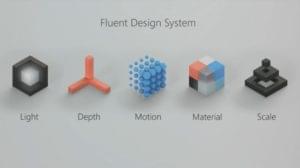
Published in
·Accessibility·Animation·Design·Design & UX·Technology·UI Design·Usability·UX·September 13, 2017


